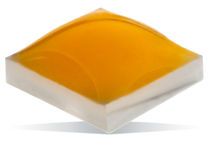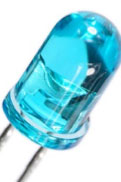- info@lgitek.com
- (877) 221-8182
What are LEDs
A light-emitting diode (LED) is a semiconductor device that emits visible light when an electric current passes through it.  The light is not particularly bright, but in most LEDs it is monochromatic, occurring at a single wavelength. The output from an LED can range from red (at a wavelength of approximately 700 nanometers) to blue-violet (about 400 nanometers).
The light is not particularly bright, but in most LEDs it is monochromatic, occurring at a single wavelength. The output from an LED can range from red (at a wavelength of approximately 700 nanometers) to blue-violet (about 400 nanometers).
An LED consists of two elements of processed material called P-type semiconductors and N-type semiconductors. These two elements are placed in direct contact, forming a region called the P-N junction. In this respect, the LED resembles most other diodetypes, but there are important  differences. The LED has a transparent package, allowing visible energy to pass through. Also, the LED has a large PN-junction area whose shape is tailored to the application.
differences. The LED has a transparent package, allowing visible energy to pass through. Also, the LED has a large PN-junction area whose shape is tailored to the application.
Benefits of LEDs compared with incandescent and fluorescent illuminating devices, include:
